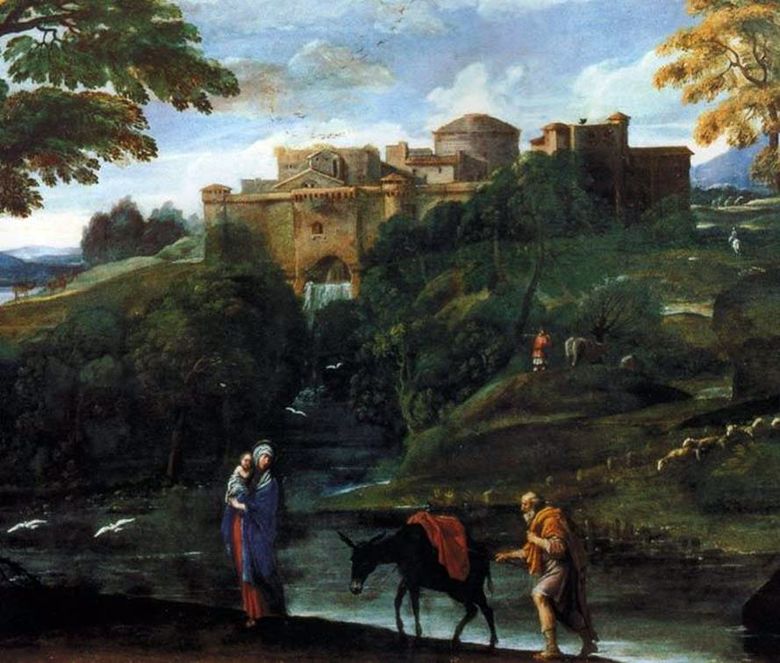
In 1603, Cardinal Aldobrandini commissioned Annibale Carracci a series of six paintings dedicated to the Life of Our Lady, to decorate the home church in his Roman palace. These paintings were to have a more or less rounded shape, so that they could decorate the church’s lunettes.
As a result, the whole series of paintings was called “lunettes of Aldobrandini”. Himself Annibale Carracci wrote only two lunettes – “Flight into Egypt” and “The Burial of Christ.” Depressed by the way Cardinal Farnese treated him, sick and tired, the artist handed over the remaining four works to his students, who finished them according to the master’s drawings.
At the end of the XVII century, pictures were taken from the lunettes, and the church was destroyed. These works are interesting, in the first place, the landscape background. If in his youth Annibale Carracci built his landscapes in the traditions of the Venetian school, then in his later works, to which the “Escape to Egypt” also refers, we see very different landscapes.
In them, elements of nature are harmoniously combined with human figures. Art historians believe that the “Ledus of Aldobrandini” are the first examples of the so-called “ideal” or “classical” landscape developed in the seventeenth and eighteenth centuries into an independent genre of painting.
 Idyllic landscape by Annibale Carracci
Idyllic landscape by Annibale Carracci Vol vers l’Égypte – Annibale Carracci
Vol vers l’Égypte – Annibale Carracci Landscape with a holiday scene of the Holy Family on the way to Egypt by Annibale Carracci
Landscape with a holiday scene of the Holy Family on the way to Egypt by Annibale Carracci Vuelo a Egipto – Annibale Carracci
Vuelo a Egipto – Annibale Carracci Paintings by Palazzo Magnani by Annibale Carracci
Paintings by Palazzo Magnani by Annibale Carracci Meat shop by Annibale Carracci
Meat shop by Annibale Carracci Portrait of a drinking young man by Annibale Carracci
Portrait of a drinking young man by Annibale Carracci The Resurrection of Christ by Annibale Carracci
The Resurrection of Christ by Annibale Carracci